How to connect alarm device to VIGI NVR, Discover everything you need to know about the TP-Link VIGI NVR system — a powerful network video recorder for smart and secure surveillance. Ideal for homes, businesses, and offices.
What Is TP-Link VIGI NVR? A Complete Guide to Smart Surveillance
H1: What Is TP-Link VIGI NVR? A Complete Guide to Smart Surveillance
Looking for a reliable, scalable, and intelligent security system? The TP-Link VIGI NVR series offers powerful video recording and smart surveillance management — perfect for homes, offices, and businesses of all sizes.
H2: Why Choose TP-Link VIGI NVR for Your Surveillance Needs?
The TP-Link VIGI NVR (Network Video Recorder) is part of TP-Link’s professional VIGI security lineup. It ensures smooth video recording, remote monitoring, and smart detection — all with high-definition clarity.
Key Advantages:
Looking to connect your IP cameras seamlessly? The VIGI NVR integrates effortlessly with TP-Link’s VIGI camera range.
H2: Ideal Use Cases for TP-Link VIGI NVR
Whether you run a small store or manage a large building, VIGI NVR fits multiple scenarios:
H2: How to Set Up TP-Link VIGI NVR (Step-by-Step)
H2: TP-Link VIGI NVR Models Overview
|
Model |
Channels |
Max Resolution |
Storage Support |
|---|---|---|---|
|
VIGI NVR1004H |
4 |
5MP |
6TB |
|
VIGI NVR1008H |
8 |
5MP |
10TB |
|
VIGI NVR1016H |
16 |
8MP (4K) |
2x HDD slots |
|
VIGI NVR1032H |
32 |
4K |
2x HDD slots |
🔍 Tip: Always check camera compatibility before installation. Learn more on TP-Link’s official support page.
Final Thoughts
If you’re in the market for a dependable and smart surveillance solution, the TP-Link VIGI NVR series is a top contender. With cutting-edge features like 4K recording, AI detection, remote control, and expandable storage — it’s a future-ready system for both small and large setups.
SEO Keywords (Include in Yoast or RankMath plugin):
Objective
This article provides configuration for connecting external alarm device to VIGI NVR and the steps to configure alarm in/output.
Requirements
Introduction
VIGI NVR (with Alarm In/Out Interfaces) supports external alarm devices, which can be used to trigger alarms after NVR events, or to detect environmental abnormalities and provide abnormal signals. The alarm input receives the alarm signal. There are various types of commonly used external detectors, such as sound sensors, infrared sensors, smoke sensors, etc. The alarm output sends out alarm signal. VIGI devices can trigger alarms through external alarm devices such as external alarm lights, sirens, buzzers, etc.
To complete the configuration, you need to finish both the hardware installation and software configuration.
Hardware Installation
Before connecting the external alarm device, connect the included terminal block to the corresponding alarm interface on the VIGI NVR.
Alarm In
Please connect the positive terminal (COM port, +) of the alarm input device to the alarm input port (ALARM IN 1-16) of the NVR, and the negative terminal (NO/NC port, -) of the alarm input device to the ground terminal (G) of the NVR, as shown below.
Note:
1. The ground terminal of the alarm input (ALARM IN) requires the use of the G terminal shown in the above illustration and cannot be connected to the G terminal of the ALARM OUT connector.
2. Normally Open (NO port) means that under normal conditions, the circuit is open and no current passes through the NVR, when the alarm is triggered, the current passes through the NVR and the NVR alarms.
3. Normally Closed (NC port) means that normally the circuit is closed, and the NVR will alarm in case of a circuit fault or alarm trigger.
Alarm Out
The alarm output can be connected to either DC or AC loads. When used as a control switch for AC circuits, it is imperative to use an external relay to avoid damage to the equipment and the risk of electric shock.
Power by DC
Please connect the positive terminal (+) of the alarm output device to the positive terminal of the NVR alarm output port (ALARM OUT), marked 1~4. Then, connect the negative terminal (-) of the alarm output device to the corresponding ground terminal (G) of the NVR alarm output port (ALARM OUT).
Notes:
1. The alarm output port of the VIGI NVR is compatible with DC loads of up to 24V.
2. The NVR alarm output port (ALARM OUT) positive pole (marking 1~4) and the corresponding ground terminal (G) must be connected in a one-to-one manner, and cannot be mixed.
Power by AC
Please be aware that the normal AC load voltage is too high to trigger the alarm. Consequently, when external AC loads are connected, it is necessary to use an external relay, as illustrated in the schematic below.
Software Configuration
After connecting the external alarm device to the VIGI NVR, we need to configure alarm device on the VIGI NVR GUI or Web interface.
Alarm Input
Step 1. Select the Alarm input port from A1 to A16, we can also modify the Alarm Name for the port.
Step 2. Enable this alarm input.
Step 3. Select the Alarm Type.
Normally Open (NO) means that under normal conditions, the circuit is open and no current passes through the NVR, when the alarm is triggered, the current passes through the NVR and the NVR alarms.
Normally Closed (NC) means that normally the circuit is closed, and the NVR will alarm in case of a circuit fault or alarm trigger.
This depends on the type of alarm input device.
Step 4. Set up Arming Time. The Alarm input will only work during the set time interval.
Step 5. Configure Linkage Method.
For Regular Linkage, we can choose ‘Buzzer’ and ‘Screen Prompt’, or ink with any output port, when the alarm is triggered will let the linked port output signal.
For Recording Linkage, we can also choose to link with any channel, when the alarm is triggered will let the corresponding channel start video recording.
Alarm Output
Step 1. Select Alarm Output port from A1 to A4, we can also modify the Alarm Name for the port.
Step 2. Duration of device alarms.
Step 3. Arming Time settings. The Alarm output will only work during the set time interval.
Step 4. Set the alarm linkage on the Event setting page.
Conclusion
You have successfully set external alarm devices on VIGI NVR.
Get to know more details of each function and configuration, please go to Download Center | TP-Link to download the manual of your product.
How to connect an Alarm device or Audio device to VIGI Camera
Objective
This article provides a step-by-step guide on how to connect an Alarm device or Audio device to a VIGI Camera
Requirements
Introduction
This article applies to VIGI cameras equipped with an alarm/audio interface.
Commonly used external alarms and audio equipment include:
|
Type |
Role |
Common Devices |
|
Audio In |
Used for sound collection |
microphone, pickup |
|
Audio Out |
Used for sound output |
speakers, subwoofers, loudspeakers |
|
Alarm In |
Built-in sensors detect environmental abnormalities and provide abnormal signals |
smoke detectors, infrared detectors |
|
Alarm Out |
After receiving the alarm signal, it alerts the user |
buzzer, alarm light |
This article will describe how to connect the above external alarm/audio devices to the VIGI camera.
Hardware Installation
Before connecting the external alarm or audio device, connect the included terminal block to the corresponding alarm or audio interface on the camera.
1.1 Connect the Audio In device (using a microphone as an example)
Refer to the following diagram for the connection:
Some microphones have dedicated interfaces for power and audio, which are pre-made connectors. Refer to the following diagram for the connection:
1.2 Connect the Audio Out device (using a speaker as an example)
Refer to the following diagram for the connection:
1.3 Connect the Alarm In device (using a smoke sensor as an example)
When an external alarm device detects an abnormal situation, it sends a signal to notify the camera, which then immediately takes corresponding measures to address it. There are various types of commonly used external detectors, such as sensors for sound, infrared, smoke, etc., which are connected to the Alarm In port of the device. Using a smoke sensor as an example, the connection diagram is as follows:
1.4 Connect the Alarm Out device (using a buzzer as an example)
VIGI devices can trigger alarms through external devices such as alarm lights, sirens, buzzers, etc. These alarm devices are connected to the camera’s Alarm Out port. Using a buzzer as an example, the connection diagram is as follows:
Configuration
After connecting the external audio/alarm devices to the VIGI Camera, we need to configure audio/alarm device on the Camera Web interface. The following configuration uses the settings page of InSight S345ZI as an example.
2.1 Configuration of Audio device
Follow the steps below to configure Audio settings.
Step 1. Go to Settings > Camera > Stream > Audio.
Step 2. Configure the following parameters and click save.
2.2 Configuration of Alarm device
Follow the steps below to configure Alarm device settings.
Alarm input
Step 1. Go to Settings > Event > Alarm Device > Alarm Input.
Step 2. Select an Alarm Input Number. Check ‘Enable the alarm input’. Edit the Alarm Name.
Currently, the camera has only one alarm input port, so this option only has AI1.
Step 3. Select the Alarm Type from the dropdown list.
Step 4. Refer to Set Arming Schedule for setting scheduled time. Drag the time bar to draw desired valid time.
Notes:
Step 5. Set linkage methods as needed. If you want to link the alarm output device, you need to check the “Alarm Output” option. The “Alarm Output” option is disabled by default.
Step 6. Click Save.
Alarm Output
If the device has been connected to an alarm output device, and the alarm output No. has been configured, the device sends alarm signal to the connected alarm output device when an alarm is triggered.
Step 1. Go to Settings > Event > Alarm Device > Alarm Output.
Step 2. Select the Alarm Output Number according to the alarm interface connected to the external alarm. Currently, the camera has only one alarm output port, so this option only has AO1.
Step 3. Enable the Alarm Output Device. Edit the Alarm Name.
Step 4. Select the Alarm Duration from the dropdown list.
Step 5. Click Save.
Conclusion
With the steps above, you have successfully set the external Alarm device or Audio device to a VIGI Camera.
Get to know more details of each function and configuration please go to Download Center to download the manual of your product.

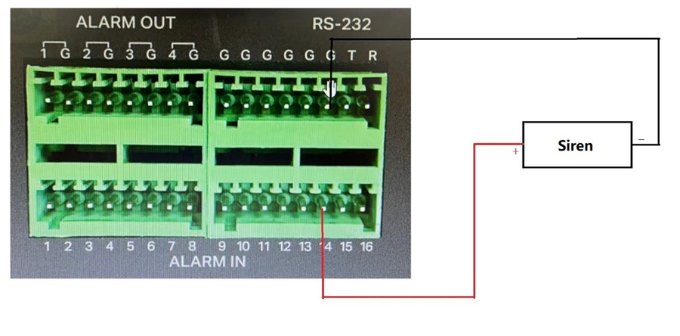
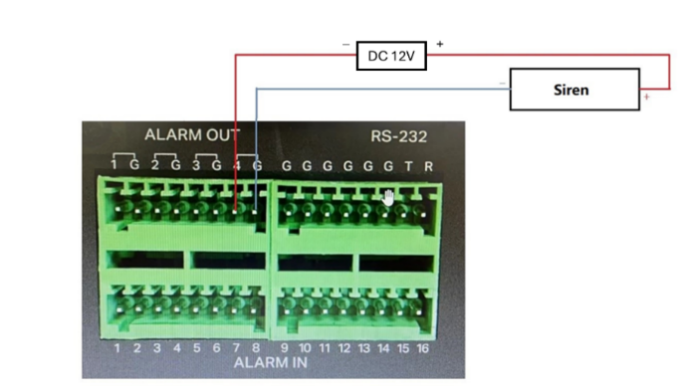
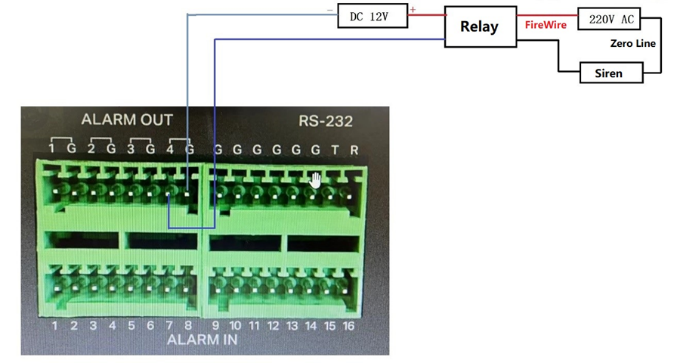
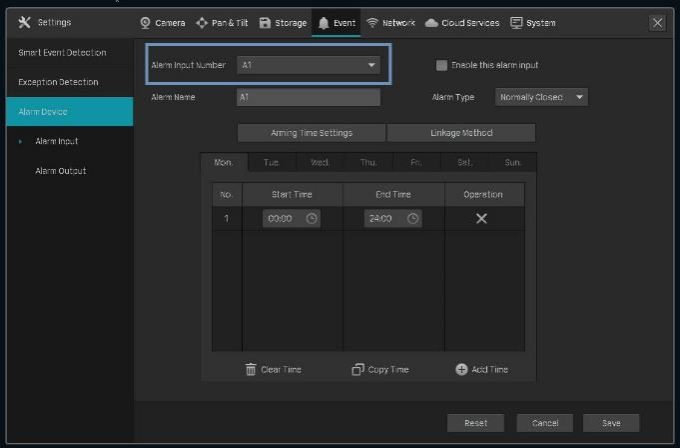
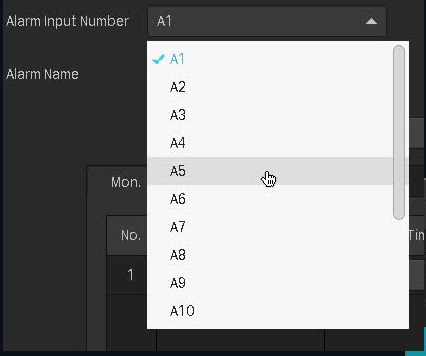
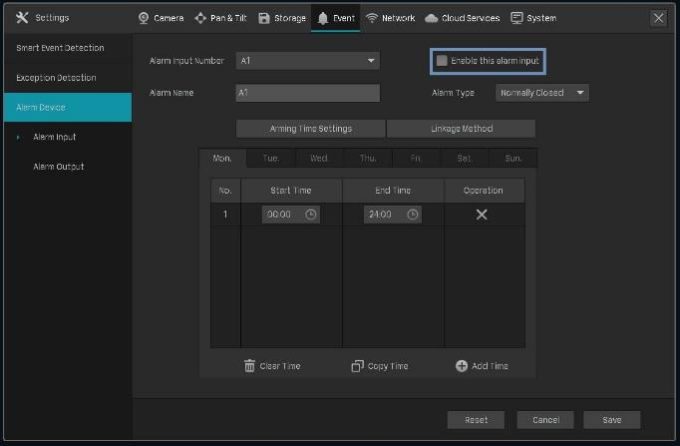
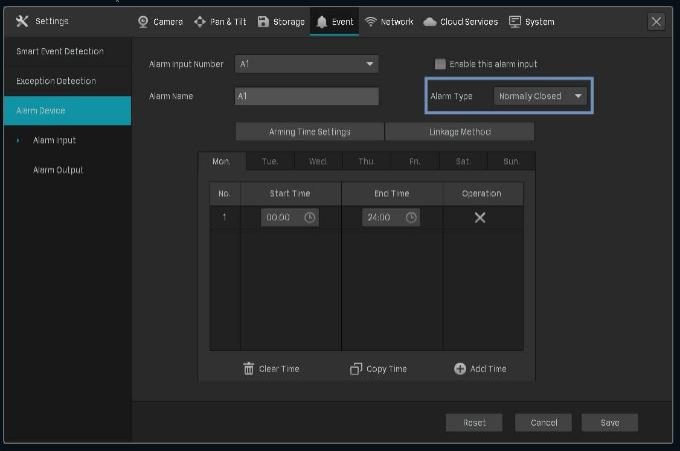
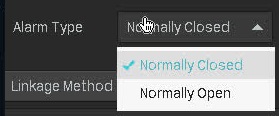
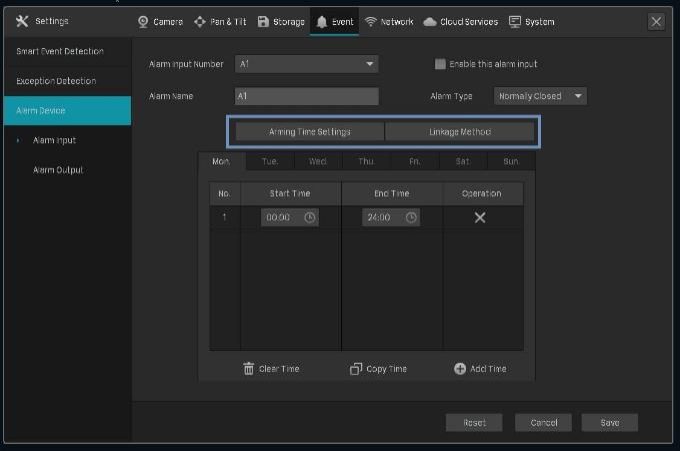
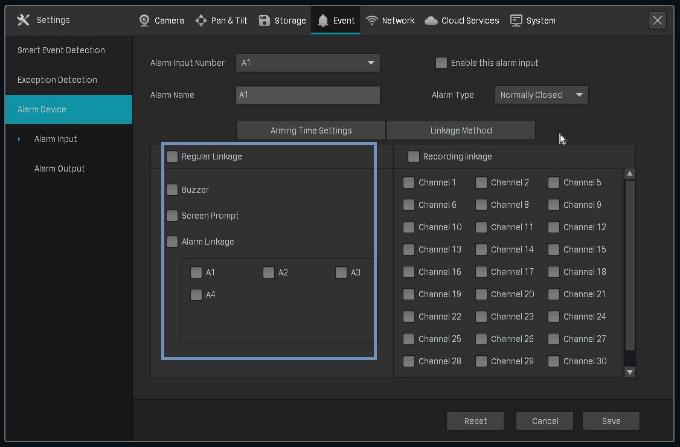
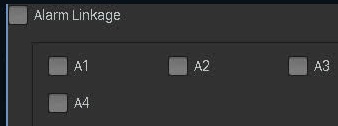
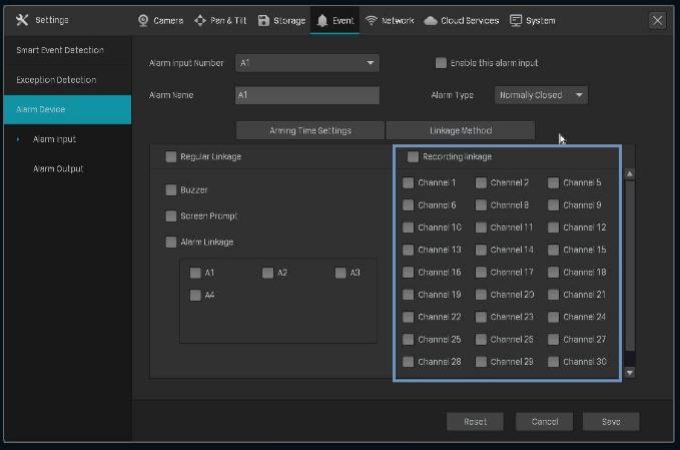
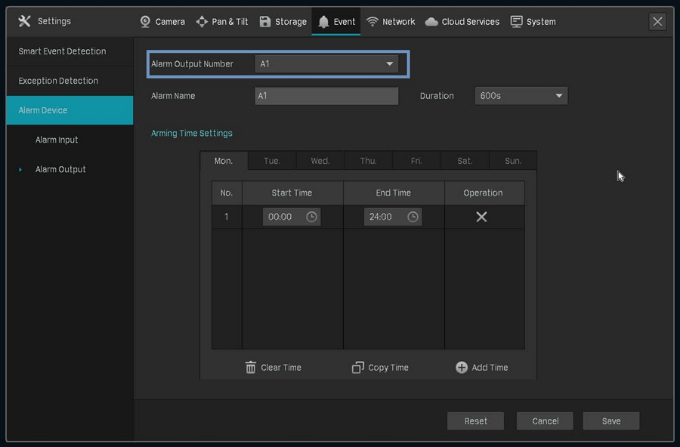
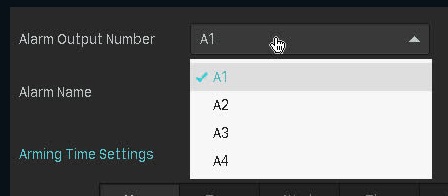
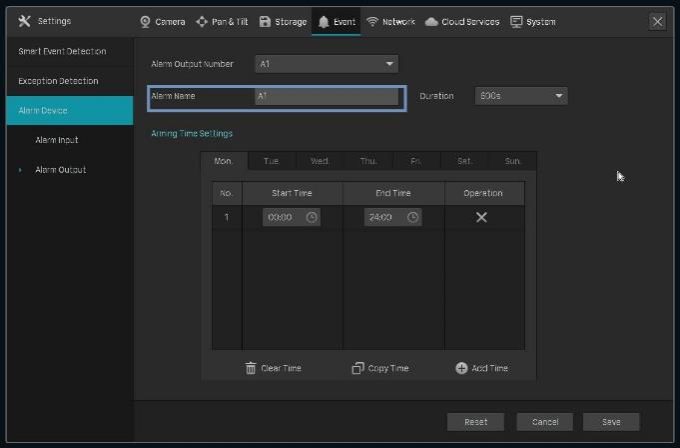
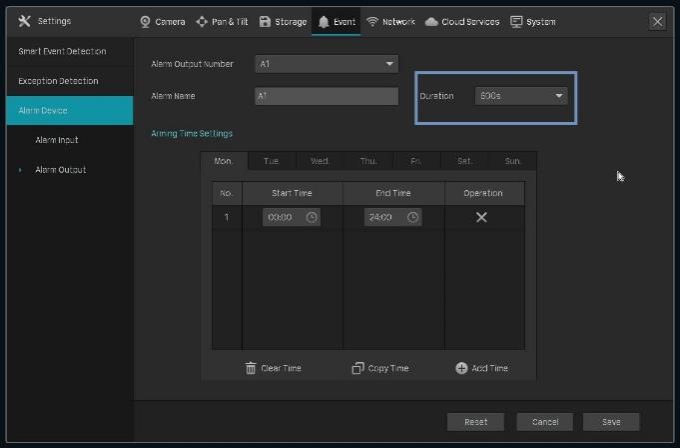
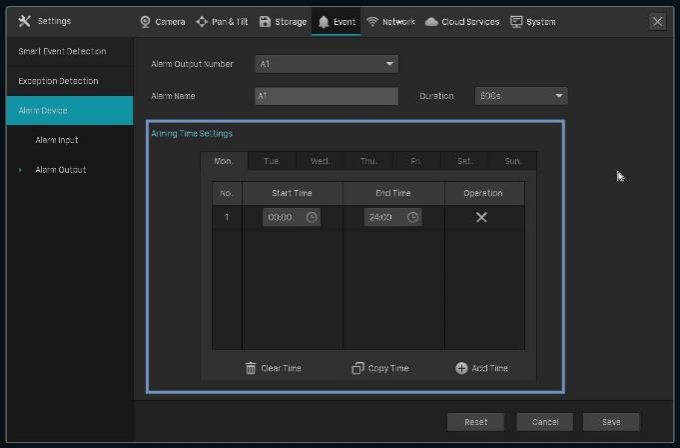
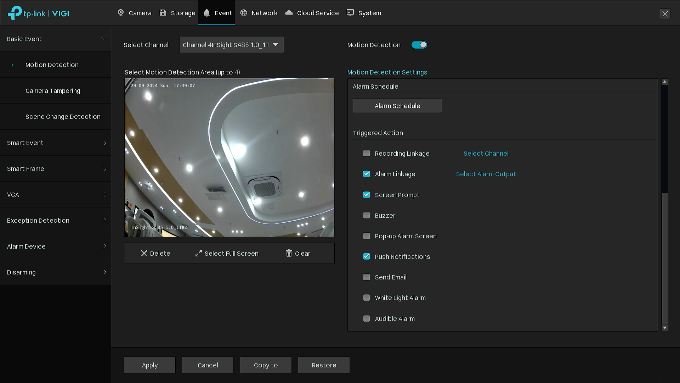
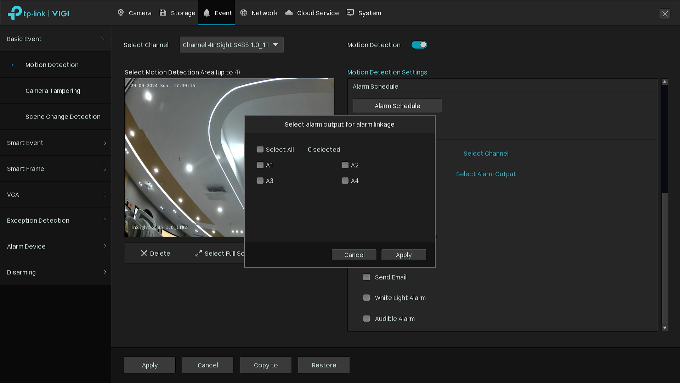
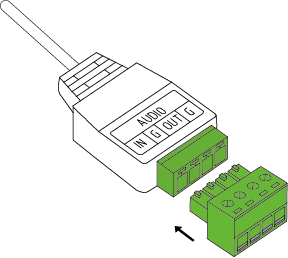
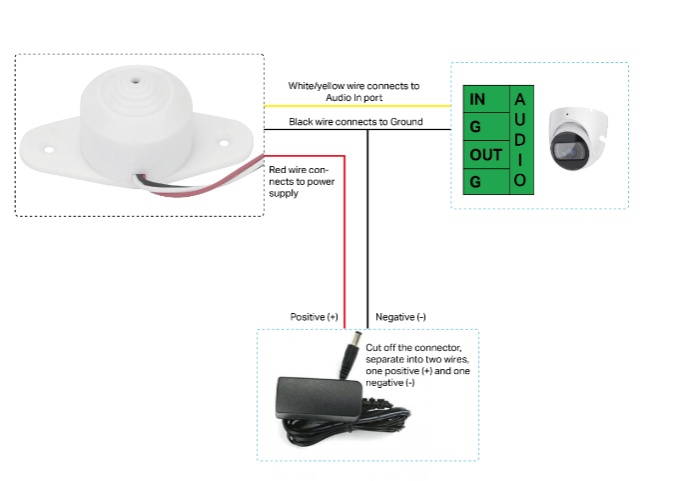
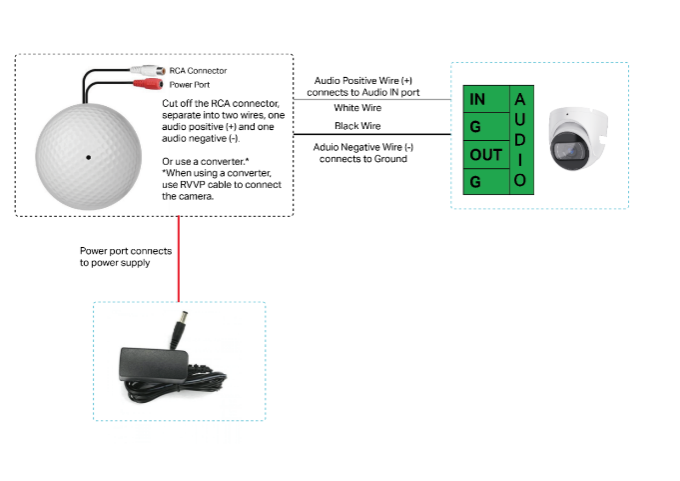
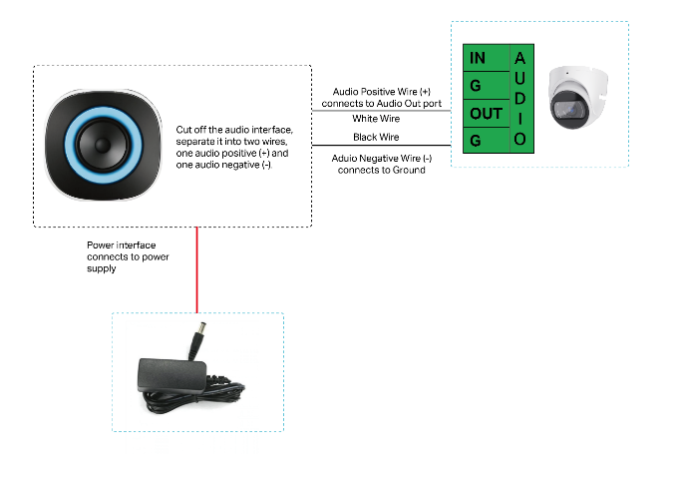
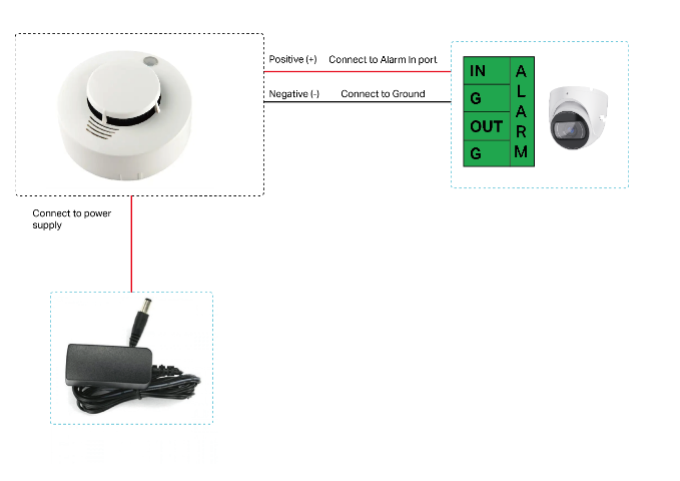
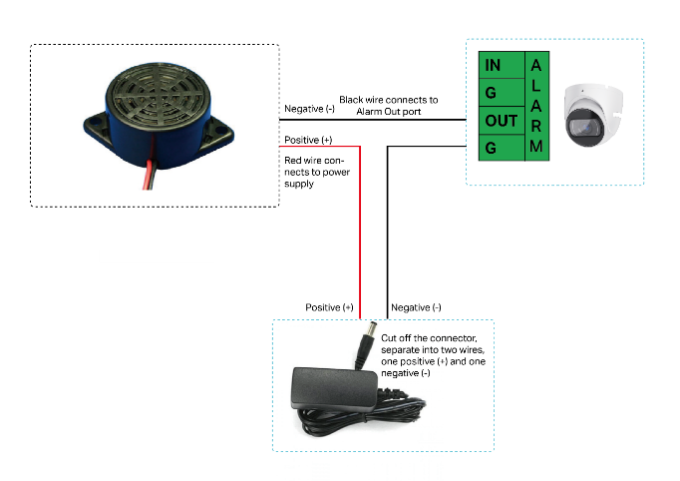
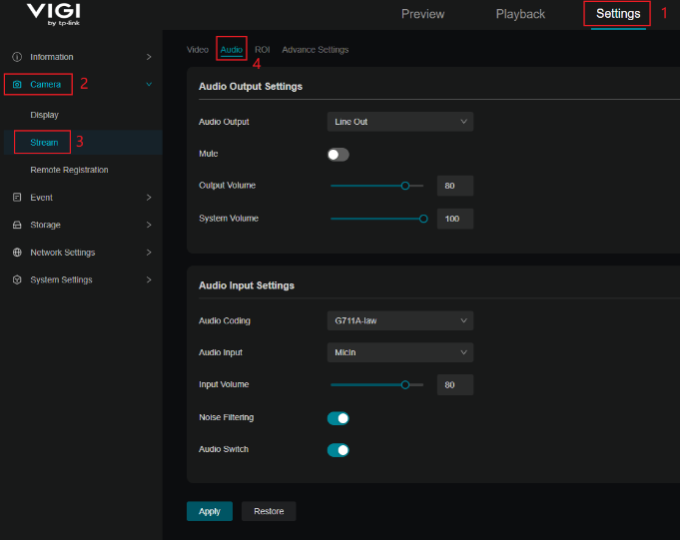
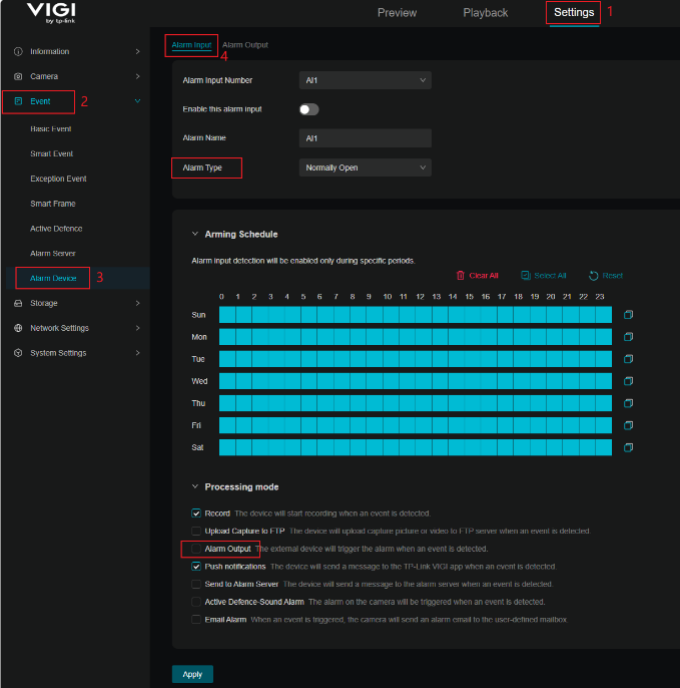
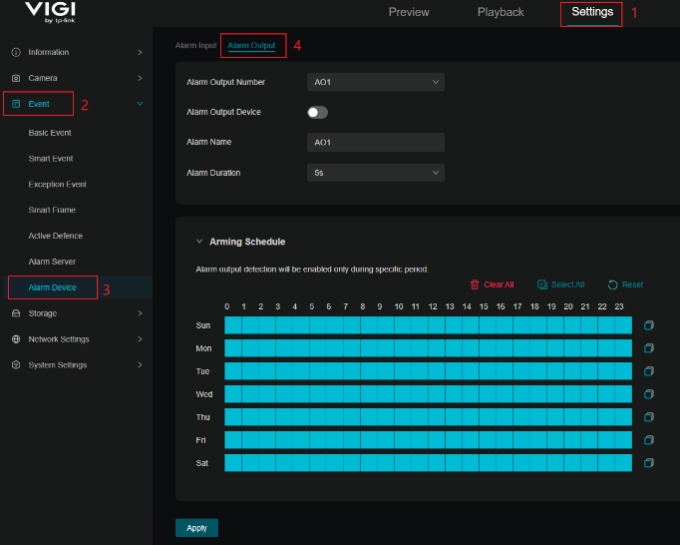
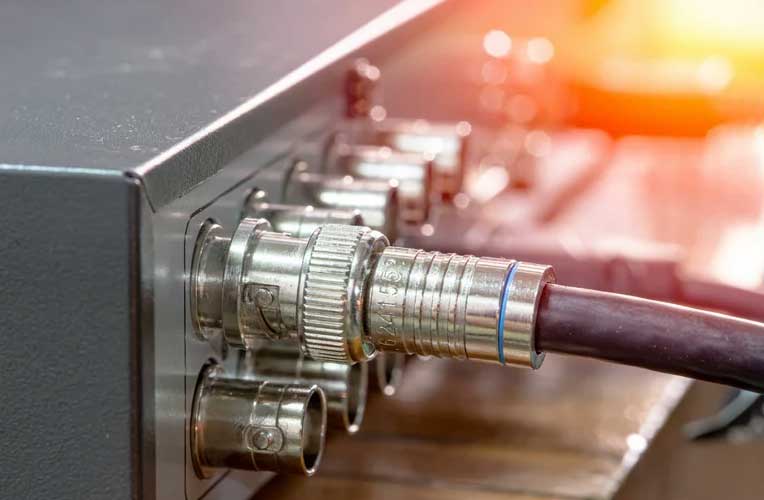
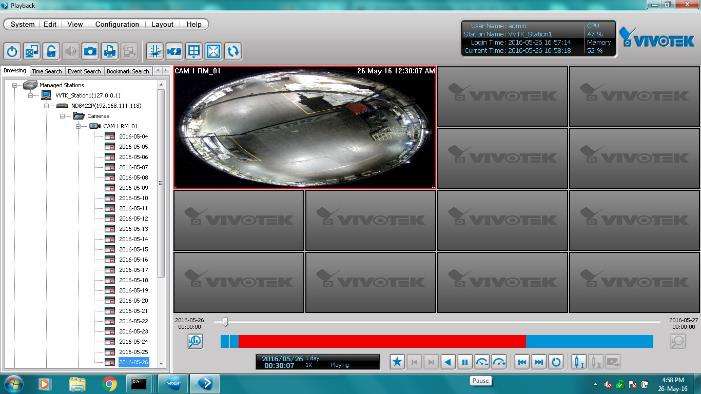
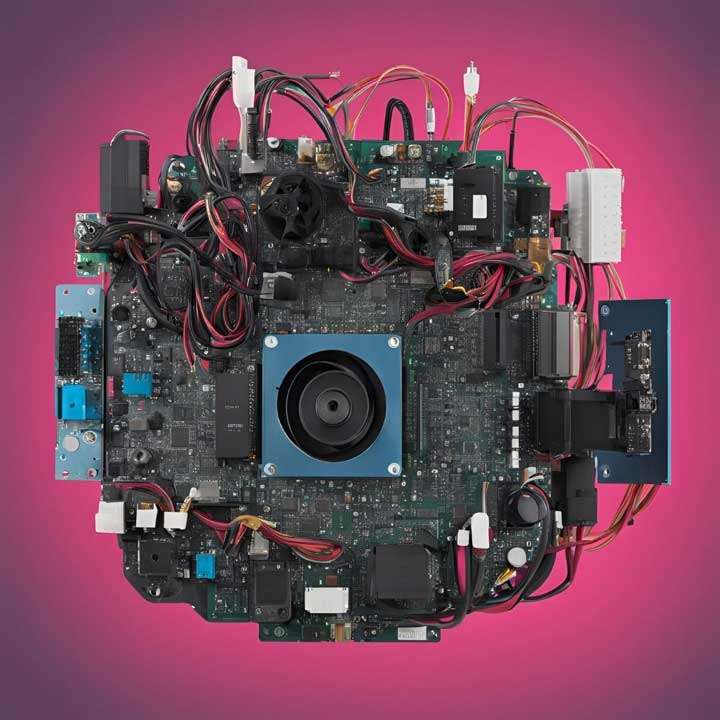
Hey,
You have something valuable that others lack—years of relationships with trusted partners.
But right now, that asset is trapped in your contact list.
Ready to transform it into a shareable link that gets you credit for every introduction?
John